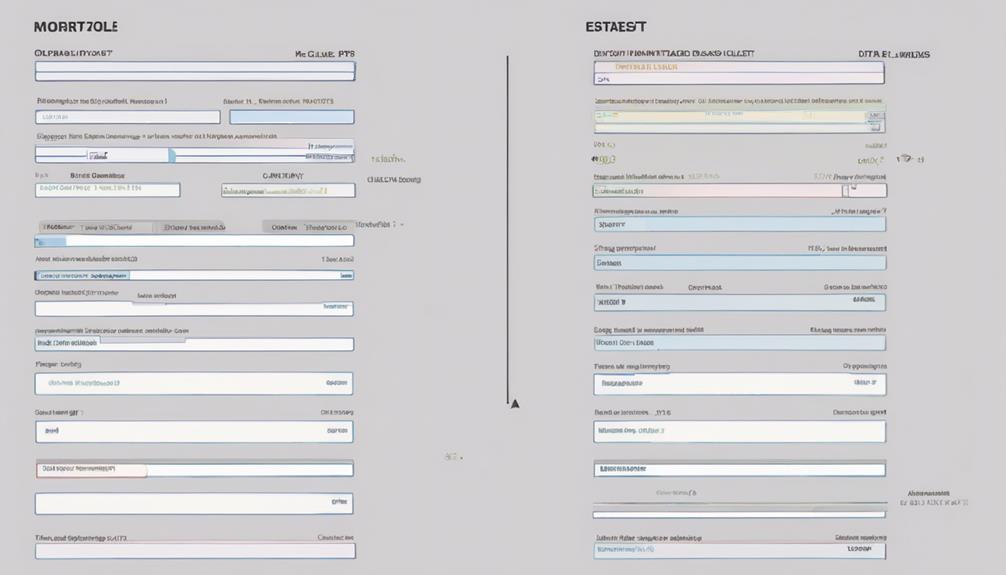When navigating the realm of database data formatting, you might find yourself surrounded by a labyrinth of challenges in database data formatting that demand your attention. From taming inconsistent data to grappling with complex structures, each hurdle presents a unique puzzle to solve. But what if there was a key that could unlock the secrets to overcoming these obstacles with finesse and precision? Join this exploration of database data formatting challenges to uncover strategies that could revolutionize how you approach data management.
Inconsistent Data
When dealing with databases, one of the primary challenges you may encounter is inconsistent data. Inconsistent data poses a significant threat to data quality, making it difficult to draw accurate insights or make informed decisions. This issue often arises due to human error, different data entry formats, or system compatibility issues.
To address inconsistent data, data cleansing becomes crucial. Data cleansing involves identifying and correcting errors or inconsistencies within the database. This process may include removing duplicate entries, standardizing formats, and validating data entries against predefined rules. By implementing data cleansing techniques, you can improve data quality and ensure that the information stored in the database is accurate and reliable.
Inconsistent data not only hampers decision-making processes but also impacts the overall efficiency of database operations. Therefore, investing time and resources in data cleansing is essential to maintain a high level of data quality and maximize the utility of your database.
Large Data Volumes
When dealing with large data volumes, you encounter challenges like the impact of data size on storage scalability and processing speed. Managing vast amounts of data can strain storage systems, leading to scalability issues that must be addressed to ensure efficient data handling. Additionally, the sheer volume of data can cause processing speed challenges, requiring optimization strategies to maintain system performance.
Data Size Impact
Given the exponential growth of data in today’s digital landscape, the impact of large data volumes on database systems cannot be understated. When dealing with massive amounts of data, several challenges arise that can significantly impact database performance and efficiency:
- Data Compression Techniques: Implementing effective data compression techniques becomes crucial to reduce storage requirements and enhance data retrieval speed.
- Data Migration Strategies: Developing efficient data migration strategies is essential when transferring large volumes of data between different databases or systems to ensure minimal downtime and data integrity.
- Indexing Optimization: Optimizing indexing becomes critical to speed up data retrieval from large datasets and improve query performance.
- Resource Allocation: Proper resource allocation, including memory and processing power, is essential to handle the increased load generated by large data volumes effectively.
Addressing these challenges proactively is vital to ensure that database systems can effectively manage and process large data volumes efficiently.
Storage Scalability Issues
To address the challenge of storage scalability issues posed by large data volumes in database systems, it is imperative to implement robust strategies that can efficiently handle the increasing demands on storage capacity. Data normalization challenges often arise when dealing with large data volumes, as the process of organizing data into tables can become complex and time-consuming. One way to mitigate these challenges is by employing effective data normalization techniques, such as breaking down data into smaller, manageable chunks to improve storage efficiency and retrieval speed.
Another crucial aspect to consider is the utilization of data compression techniques. By compressing data, you can significantly reduce the amount of storage space required while maintaining data integrity. Techniques like lossless compression ensure that no data is lost during the compression process, allowing for efficient storage and retrieval of large volumes of data. Incorporating both data normalization and compression techniques can enhance storage scalability and optimize performance in database systems dealing with massive amounts of data.
Processing Speed Challenges
Addressing the processing speed challenges associated with handling large data volumes is critical for ensuring optimal performance in database systems. When dealing with substantial amounts of data, several factors can impact processing speed:
- Memory Allocation: Efficient memory allocation is crucial when processing large data volumes to prevent bottlenecks and ensure data is readily accessible for operations.
- CPU Usage: Maximizing CPU usage effectively is essential for processing large datasets quickly and efficiently. Utilizing multi-threading or parallel processing can help distribute the workload.
- Disk I/O Optimization: Minimizing disk input/output operations is vital for enhancing processing speed. Utilizing caching mechanisms and optimizing disk access can significantly improve performance.
- Indexing Strategies: Implementing appropriate indexing strategies can enhance query performance when handling large datasets. Well-designed indexes can expedite data retrieval and processing tasks.
Complex Data Structures
When dealing with database data formatting, one of the key challenges that often arises is working with complex data structures. Complex data structures refer to datasets that contain nested relationships, requiring a hierarchical data modeling approach for effective organization. These structures can involve multiple layers of interconnected data elements, making it challenging to extract, store, and manipulate information efficiently.
Nested relationships within data structures can lead to increased complexity in querying and updating databases. Hierarchical data modeling is essential for representing these relationships accurately, but it can also introduce intricacies that need to be carefully managed. Ensuring data integrity and consistency becomes paramount when dealing with such complex structures, as errors in formatting or handling can have cascading effects throughout the database.
Incorporating appropriate normalization techniques and using advanced database management tools can help mitigate some of the challenges posed by complex data structures. By understanding the intricacies of nested relationships and hierarchical data modeling, database administrators can optimize data formatting processes and enhance overall system performance.
Data Security Concerns
Amidst the complexities of database data formatting, data security concerns stand as a critical focal point. Ensuring the confidentiality, integrity, and availability of data is paramount in today’s digital landscape. Here are four key considerations to address these challenges:
- Data Encryption: Implementing robust encryption mechanisms is essential to protect sensitive information from unauthorized access. Utilizing encryption algorithms such as AES or RSA can safeguard data both at rest and in transit.
- Access Control: Establishing stringent access controls helps manage who can view or manipulate data within the database. Role-based access control (RBAC) and attribute-based access control (ABAC) are common methods to restrict unauthorized users from accessing sensitive data.
- Regular Auditing: Conducting regular audits and monitoring database activities can help identify any unusual behavior or security breaches promptly. This proactive approach enhances the overall security posture of the database.
- Security Patch Management: Timely application of security patches and updates is crucial to address vulnerabilities and protect the database from potential exploits. Regularly updating database software and security protocols helps mitigate security risks and ensures data remains secure.
Legacy Data Challenges
As you navigate the intricate realm of database data formatting, another significant challenge arises with legacy data. Legacy data presents hurdles in data migration and data cleansing processes. When dealing with legacy systems, you often encounter outdated data formats, redundant information, and inconsistent data quality. Data migration from legacy systems to modern databases can be complex due to incompatible data structures and formats. This requires meticulous planning and execution to ensure a smooth transition without data loss or corruption.
Moreover, legacy data is often plagued with inconsistencies and errors, necessitating thorough data cleansing efforts. Data cleansing involves identifying and rectifying inaccuracies, duplicates, and incomplete information within the legacy data. This process is crucial to maintain data integrity and ensure the accuracy of the migrated data in the new database environment.
Time and Resource Constraints
How do time and resource constraints impact the intricate process of database data formatting? When facing limitations in time and resources, several critical aspects of database data formatting may be affected:
- Training Needs: With limited time and resources, providing comprehensive training to staff on new formatting techniques or tools may be challenging. This can result in a lack of expertise in handling data formatting tasks efficiently.
- Data Quality: Time constraints can lead to rushed data formatting processes, increasing the likelihood of errors and inconsistencies in the database. Without adequate resources for thorough quality checks, data integrity may be compromised.
- Resource Allocation: Limited resources may impede the acquisition of advanced formatting tools or software, hindering the optimization of the database formatting process.
- Project Deadlines: Time constraints can impact project timelines, potentially leading to rushed formatting tasks that sacrifice quality for speed, ultimately affecting the overall efficiency of data management processes.
Frequently Asked Questions
How Can I Ensure Data Accuracy in Inconsistent Data Formats?
To ensure data accuracy in inconsistent formats, focus on data validation and cleansing. Identify patterns for normalization. Implement automated tools for standardization. Enforce data integrity rules. Regularly audit and update formats. Train users on input standards.
What Strategies Can Help Handle Extremely Large Data Volumes?
Imagine your data as a colossal puzzle. To solve it efficiently, divide the pieces using data partitioning. Compressing chunks will make them more manageable. Achieve balance by distributing workloads smartly with load balancing and speed up processing with parallel techniques.
How to Manage Complex Data Structures for Efficient Querying?
To manage complex data structures for efficient querying, focus on data normalization to organize information logically. Implement query optimization techniques by creating indexes, using proper joins, and limiting the data returned to enhance performance and speed up database operations effectively.
What Are the Latest Measures to Enhance Database Security?
To enhance database security, you must focus on enhancing encryption protocols and implementing stringent access controls. By doing so, you can safeguard sensitive data from unauthorized access and potential security breaches, ensuring the integrity of your database.
How to Effectively Migrate and Integrate Legacy Data With New Systems?
When migrating legacy data to new systems, ensure seamless integration for data consistency. Maintain accuracy by mapping fields correctly. Utilize data transformation tools to bridge the gap between old and new formats efficiently.



